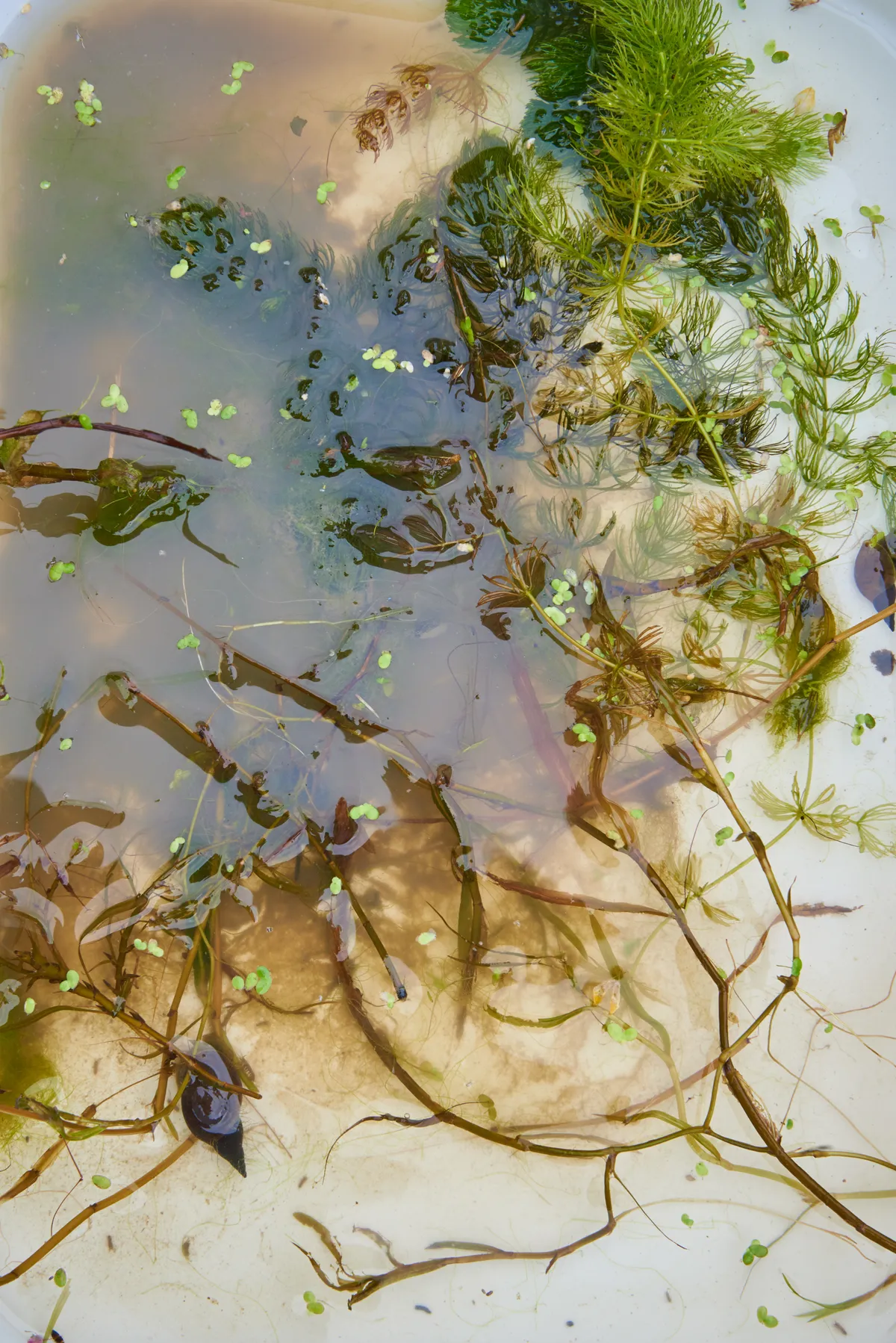You can pond dip at any time of year, although spring and summer will yield more results as the water is rich with new invertebrate life.
When pond dipping with children, ensure they know the essential rules (see below), and that they are always with an adult. You don’t need a lot of kit. Use a fishing net or even an old kitchen sieve, and white trays to help you see what you find. You may also want to record species – taking note of the day, time and year can help you work out how quickly new species are colonizing your little body of water.

At each stage, work slowly and carefully so as not to harm the animals. Try different areas and depths of the pond to catch the greatest range of species.
Once you’ve finished observing and recording, gently return your catch to the water.
The essential rules of pond dipping
There are a few rules to follow when pond dipping, to keep both humans and wildlife safe:
- Always kneel to avoid falling in. Never stand at the edge.
- Use separate containers for predators and prey – if you keep them together you may find the prey keeps “disappearing”.
- Avoid leaving the trays in the hot sun, which can cause the water to overheat and harm your catch.
- Return all of your catch to the pond after you’ve finished.
- Never move animals from one pond to another.
- Rest the net in the pond while you investigate, to avoid harming anything that is caught in it.
What species are found in ponds?
The web of life in a pond is complex, and includes microscopic species, detritivores that eat dead plant material, algae-eaters, predators and parasites.
You can find some pond invertebrates in our identification guide, but you may wish to invest in a freshwater life book to cover species at all stages of their lifecycles. Learning to identify these species will greatly enhance your enjoyment of your pond.